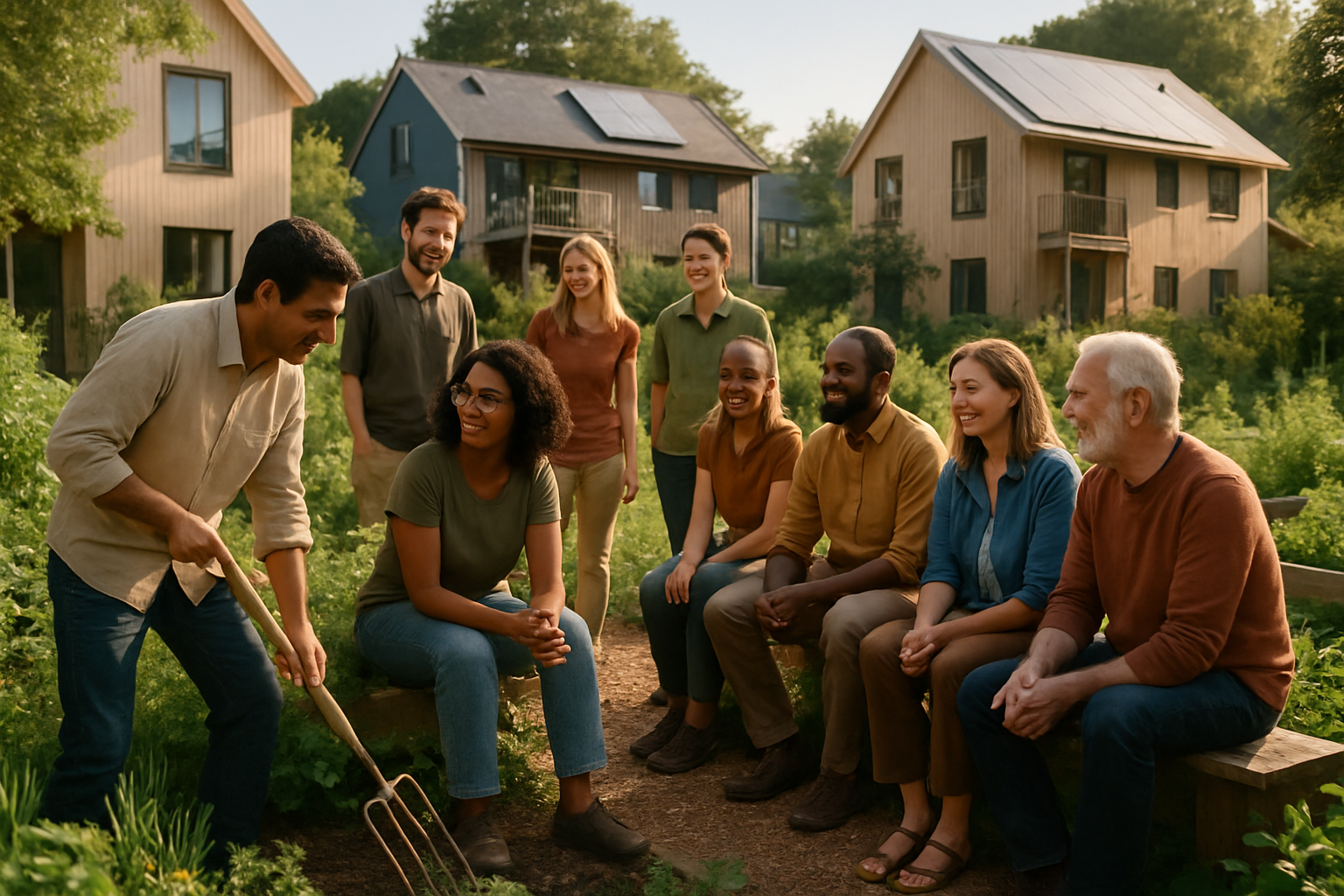Microtopias: The Rise of Intentional Pocket Communities
In a world increasingly fragmented by digital connections and urban sprawl, a new social phenomenon is quietly taking root. Microtopias, small-scale intentional communities designed to foster human connection and sustainable living, are emerging as a powerful antidote to modern alienation. Read below to explore this fascinating trend reshaping how we live, work, and relate to one another.

The Genesis of Microtopias
The concept of intentional communities is not new, with roots tracing back to utopian experiments of the 19th century. However, the modern microtopia movement has gained significant momentum in the past decade, driven by a confluence of social, economic, and environmental factors. Urbanization, the loneliness epidemic, and growing awareness of climate change have all contributed to a renewed interest in alternative living arrangements that promise greater connection and purpose.
Sociologists point to the 2008 financial crisis as a pivotal moment that spurred many to reevaluate their lifestyles and seek out more resilient social structures. The subsequent rise of the sharing economy and collaborative consumption further paved the way for microtopias, normalizing the idea of shared resources and communal living spaces.
Anatomy of a Microtopia
While each microtopia is unique, they typically share several key characteristics. At the heart of these communities is a commitment to shared governance and decision-making processes. Residents often participate in regular community meetings and contribute to the maintenance and development of shared spaces. This collaborative approach fosters a sense of ownership and belonging that is often lacking in conventional neighborhoods.
Sustainability is another cornerstone of microtopian living. Many communities incorporate renewable energy systems, permaculture gardens, and waste reduction initiatives into their design. This focus on ecological responsibility not only reduces the community’s environmental impact but also serves as a unifying purpose for residents.
The Social Architecture of Microtopias
Perhaps the most distinctive feature of microtopias is their emphasis on social connection. Unlike traditional housing developments where privacy is paramount, these communities are intentionally designed to encourage interaction. Common areas, shared meals, and collaborative projects are woven into the fabric of daily life, creating opportunities for meaningful relationships to flourish.
Research conducted by social psychologists suggests that this emphasis on community can have profound effects on mental health and wellbeing. Studies have shown that residents of microtopias report lower levels of loneliness and higher levels of life satisfaction compared to their counterparts in conventional housing arrangements.
Challenges and Criticisms
Despite their appeal, microtopias are not without their challenges. Critics argue that these communities can become insular, potentially reinforcing social bubbles and exacerbating broader societal divisions. There are also concerns about the scalability and accessibility of such projects, as they often require significant financial and time investments from participants.
Additionally, the intense social nature of microtopian living is not for everyone. Conflicts over shared resources, decision-making processes, and personal boundaries are common hurdles that communities must navigate. Successful microtopias often implement robust conflict resolution mechanisms and clear agreements to address these issues.
The Future of Community Living
As the microtopia movement continues to evolve, it is sparking important conversations about the future of urban planning and social organization. Some cities are beginning to incorporate elements of intentional community design into their development strategies, recognizing the potential benefits for social cohesion and sustainability.
Innovations in technology are also shaping the future of microtopias. Online platforms for community organization and resource sharing are making it easier for like-minded individuals to connect and form intentional communities. Virtual reality and augmented reality technologies offer new possibilities for creating hybrid physical-digital communal spaces.
Microtopias and Societal Resilience
In an era of increasing global uncertainty, microtopias are emerging as laboratories for social resilience. By fostering strong local networks and self-sufficiency, these communities may be better equipped to weather economic downturns, natural disasters, and other societal challenges. This aspect of microtopian living has garnered attention from policymakers and urban planners seeking to build more resilient cities and neighborhoods.
The COVID-19 pandemic has further highlighted the potential benefits of microtopian models. Communities with strong social bonds and shared resources were often better able to support their members during lockdowns and periods of economic stress. This real-world stress test has led to increased interest in intentional community living as a strategy for building social and economic resilience.
Bridging Microtopias and Mainstream Society
As the microtopia movement gains traction, an important question emerges: how can these communities avoid becoming isolated enclaves and instead serve as catalysts for broader social change? Some microtopias are addressing this challenge by actively engaging with their surrounding neighborhoods, hosting public events, and participating in local governance.
There is also growing interest in applying microtopian principles to existing neighborhoods and communities. initiatives like “pocket neighborhoods” and “retrofit cohousing” aim to introduce elements of intentional community design into conventional urban and suburban settings, potentially bridging the gap between microtopias and mainstream society.
In conclusion, microtopias represent a fascinating experiment in reimagining community life for the 21st century. By prioritizing human connection, sustainability, and shared purpose, these intentional communities offer valuable insights into addressing some of the most pressing social challenges of our time. As the movement continues to evolve, it has the potential to influence broader conversations about urban planning, social cohesion, and the pursuit of more fulfilling ways of living in an increasingly complex world.





